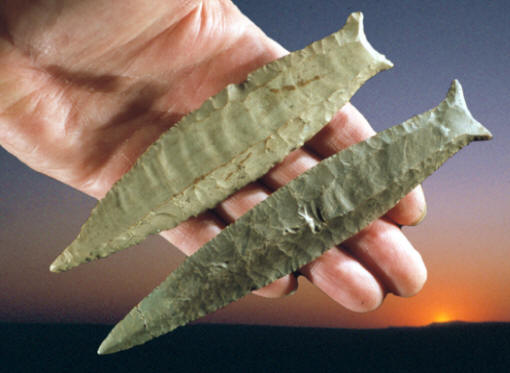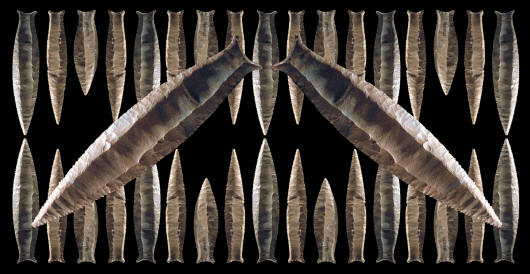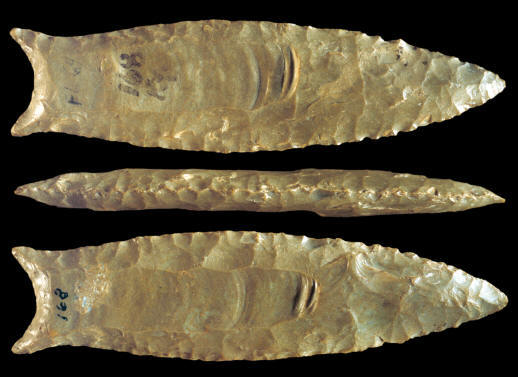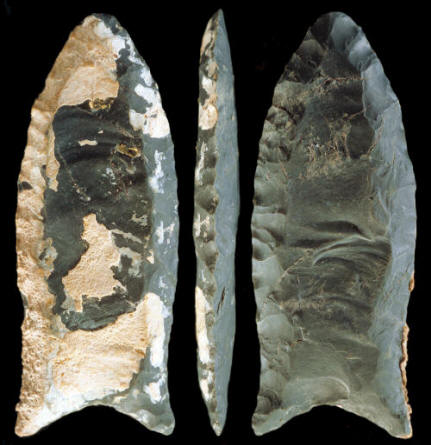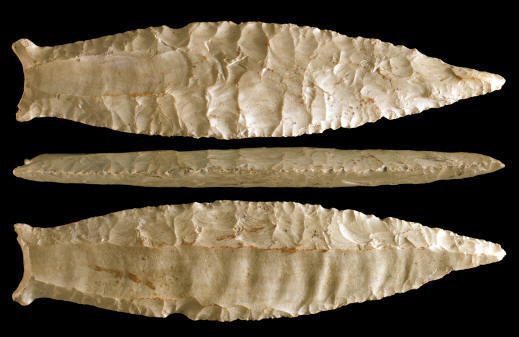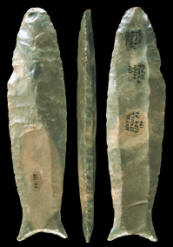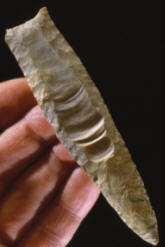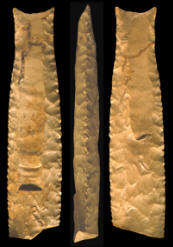|
||
|
||
|
"No archaeological
feature containing Cumberland points has ever been absolutely dated."---1999,
Richard Michael Gramly, The Amateur Archaeologist, Kentucky, "A
Cumberland Point Site Near Trinity, Lewis County, Northern Kentucky," p.
83.
Cumberland points are the most enigmatic of the fluted point types found in North America. To date, no one has reported an excavation of a Cumberland site with specific information about their tool kit and manufacturing debris. In fact, the most recent Smithsonian publication printed in 2006, in the series "Handbook of North American Indians," that represents Origins and Population, does not mention in the index a reference to Cumberland. Very little is known about Cumberland points compared to Clovis, Folsom, Barnes and Crowfield. Few people have seen more than twenty or thirty complete unbroken Cumberland points. |
||
|
The Phil Stratton site is the first encapsulated Cumberland site that is still in the process of excavation. The Cumberland feature is situated in Peoria loess which is estimated to date between 12 and 29 thousand years. The Phil Stratton site has so far produced 663 tools and 14,059 pieces of debitage. The first report is just now being published. |
||
|
Cumberland points are diagnostic of the Paleo-Indian period. The only carbon date for a Cumberland point comes from the Dutchess Quarry Cave #1 site in New York. A carbon date taken from a caribou bone produced a date of 10,580 B.C. + 370. The Dutchess Quarry Cumberland point was made of Kalkberg chert and measured 2 7/16 inches (6.2 cm) long. The Phil Stratton site has produced optically stimulated luminescence dates, from soil samples taken within the Cumberland feature, of 12 to 16 thousands years. |
||
|
Cumberland points have been described as being diagnostic of the Parkhill complex in the Great Lakes area. The Parkhill complex is known for Barnes points which have a different shape than Cumberland points from Kentucky, Tennessee, Alabama and other states in the southeast. Barnes points are similar in some ways to Cumberland points but they are not the same. Cumberland points are generally longer, thicker and have wider basal corners or "ears." Barnes points were named by William Roosa in 1963 from a site in Midland County, Michigan. |
||
|
||
|
Most Cumberland points have been found throughout the Cumberland and Tennessee River drainages in Kentucky, Tennessee and Alabama. But they have a much wider distribution area that extends outward, in smaller numbers, into Illinois, Indiana, southern Ohio and other eastern states. As the type moves northward to New York and across to the Great Lakes it changes into Barnes points. |
||
| CONTINUE ON TO PAGE TWO | ||
|
"REFERENCES"
1958, Love, C. T.,
Central States Archaeological Journal, "Cumberland Fluted Spearhead,
Figure 75," p. 136. |
||
